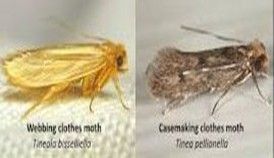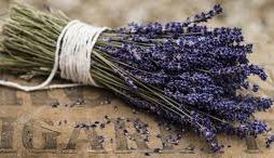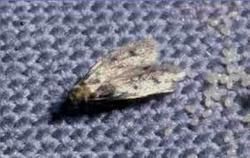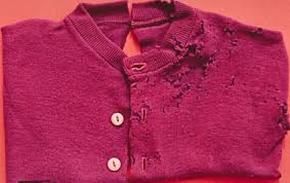It’s moth season and the best, safest place for them to nest is your closet. That’s right, nest. Moths don’t actually ‘eat’ your animal-based garments – wool, cashmere, silk and fur – they lay their eggs within your clothes ensuring their larvae have an ample food source when they hatch. Babies get hungry!
Got Tineola Bisselliella?
July 10, 2017


Best way to ward off the pesky pests without smelling up your wardrobe with toxic pesticides naphthalene or dichlorobenzene (chemical names for mothballs and thought to be carcinogenic) or camphor (equally bad for your health):
- Keep your closet very clean – vacuum frequently including the walls and shelves
- Clean your animal-based garments – wool, cashmere, silk, fur – after each season and store them in clean, sealed cotton garment bags or air-tight containers (PLEASE avoid using plastics as it traps airborne toxins that will discolor your fine fabrics)
- Keep dried lavender adjacent to your animal-based garments
Already infested?
- Take your animal-based garments to the dry-cleaner immediately
- Wash the rest of your garments - including cottons as larvae are known to wander - in hot water at least 120⁰ F
- Vacuum your closet, including the shelves and floors and spread dried lavender around
- Find a good weaver…
Think you’re safe because you use cedar balls or installed that beautiful cedar closet? Think again! The oils that emit moth-prohibiting fumes are only effective in very high concentrations and lose their potency over time. The wood needs to be sanded down regularly to have ongoing effectiveness.
There is one way to totally moth-proof your wardrobe – the freezer. Something to think about for those Shirley’s Designs & Alterations customers thinking of a kitchen remodel this summer….


